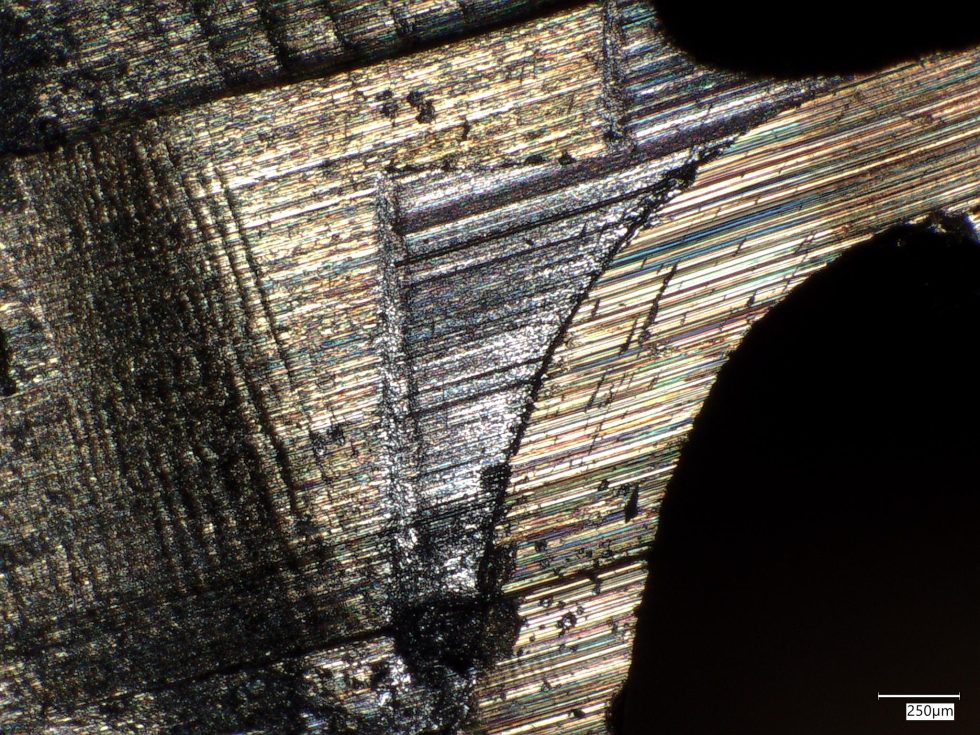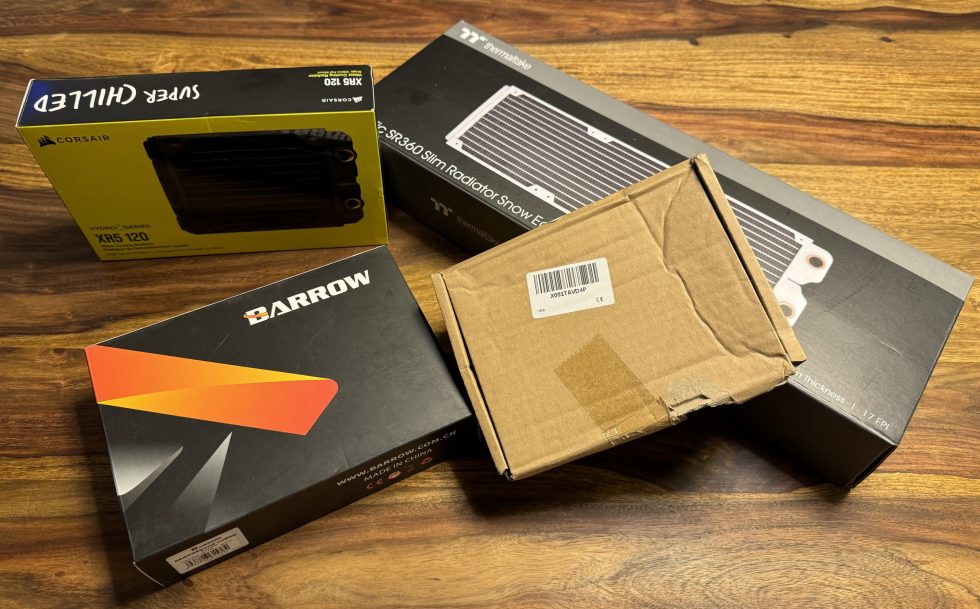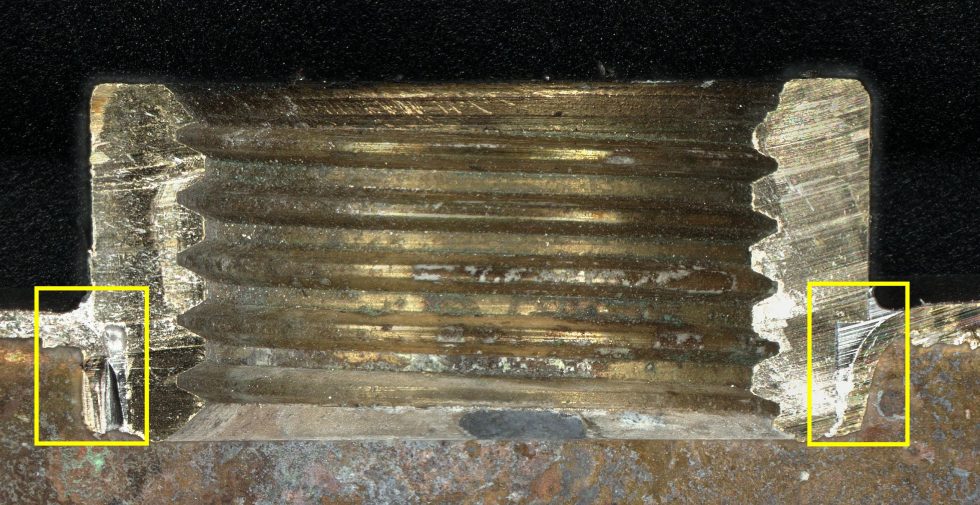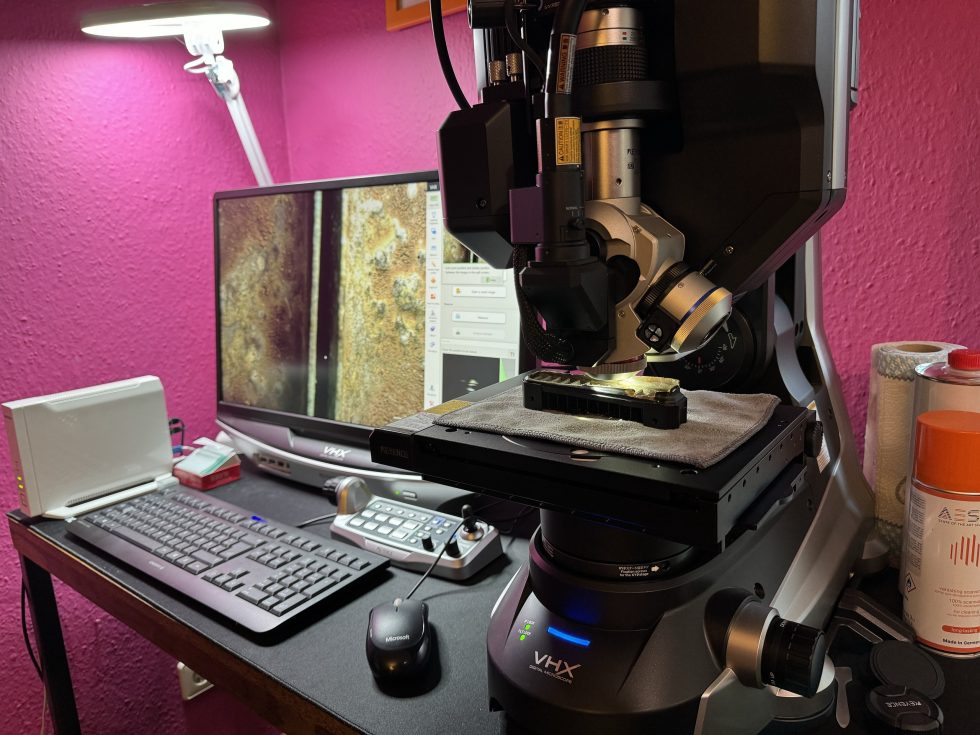Even though there are only four radiators today, I spent quite a lot of time finding the right places where some manufacturers still like to use unauthorized substances such as lead – always hoping that nobody will find them anyway. At the same time, I have my sights set on an OEM for the next part that can even do both: work cleanly and ram, depending on the order and financial commitment. However, this requires further information, which I still need to obtain, as this OEM has many (un)known customers.
In the first part, I also mentioned incorrect or misleading material specifications. In addition to Bykski, at least EK has contacted me and we are still in the process of clarifying the issue of flux residues with the companies. Then there will also be a statement and the addition in Part 1 if there are further findings or feedback. As far as Watercool is concerned, the company has now chosen a different way to explain itself publicly. Of course, everyone can decide for themselves, but I would have liked to have published an official statement on Monday. However, even after a week, there is still copper for the channels in all the stores (including Caseking and Mindfactory), so much for a correction. But there are worse things, e.g. lead.
Brass or copper?
Of course, brass should not be demonized in general and copper exclusively praised as salutary when it comes to purely thermal issues. A little zinc creates more stability and also allows for thinner-walled ducts if this alloy is deliberately used to reduce the wall thickness and thus also the thermal resistance. Then, assuming good engineering, you can even get just below the values of copper in thicker walls. If you want to. Companies such as Hardware Labs have been successfully trying to reduce the size of structures for years, while others simply use brass to reduce costs. So the devil is always in the detail and in which path a company ultimately decides to take.
But as I already wrote in the first part: everyday performance is not the subject of this series of articles, but the pure material analyses and the detection of prohibited substances. I would also ask those who use these articles in their media to really pay attention to the nuances and not just break the content down into a short form using their own words, which may be misleading. In the case of lead, this is really clear and it must be criticized without reservation; in the case of brass, you always have to look at the overall concept. Perhaps I will adapt the introduction to the first article in this regard, because not everyone will read the original text. I am also planning another article that deals with the manufacturing process in detail.
In addition, if you don’t look at it with purely German eyes, you have to bear in mind the different meanings of copper and brass. Historically, in the English-speaking world, a distinction is actually only made between copper and aluminum radiators. Interestingly, the subtleties of the distinction between brass and copper are of no interest to anyone there, especially not to the marketing department. You have to keep this in mind when the respective PR department creates such websites and then translates them into German.
If a German company advertises with copper, this certainly has a completely different significance for the local target group than if “red” copper is advertised on the US market. After all, brass is also copper there and hardly anyone knows the difference. You won’t win anything there with an all-copper radiator, for example, because nobody nuances it. That’s why this time I’m going to focus more on the materials and quality features that are essential.
Where lead likes to hide
After talking to one of the major OEMs, I also expanded the areas that I examine. After all, soldering is not only done on the channels (tubing, fins) and in the pre-chamber (tank), but also on the threaded inserts for the fittings. I have also analyzed some of the newly added areas for the radiators already tested, but found nothing negative. That’s good! In order to remain more comparable and to shorten the explanation of the proportions, this time I generally measured everything in wt% (weight percent). I got the tip about the pre-chamber from the industry, because even the contract manufacturers have parts manufactured and supplied by third parties or even fourth parties.

Quality management is hardly possible when a brand has the radiators of a model manufactured by different OEMs, who in turn use their own and very different suppliers. The only thing that helps is the final inspection. However, what is written in some certificates is pure waste, because everything has never really been fully checked. Or you do it like 80Plus.org, where there is a clean bill of health for all customers of a platform, without even being checked in detail.
Of course, the sense or nonsense of banning lead is open to debate, but if there are legal regulations, then they must be adhered to unconditionally. And even if some people may not accept the purpose of such bans in individual cases, in the end it is and remains a question of fair competition. As a market participant, you have to bow to it. Whether or not you address this as a reviewer should be left to the respective tester. I think the topic is important and will continue to do so, as well as testing other components.
You can easily save up to 15% on the cost of soldering with lead solder, and that’s not even including the time saved. And there are markets where nobody really cares about lead and where nobody takes a closer look anyway. If you want to switch to lead-free, you have to have around 10 tons of tin and more ready for a new soldering tank, cleaning and changing is difficult to impossible. So you have to rebuild and that is precisely why there are still many companies today that shy away from this effort. You can’t do both at the same time.
And that’s exactly why today it’s once again about the details and the credibility of the specifications (and therefore also of the supplier or manufacturer), whereby I can already spoil the fact that I have once again found huge amounts of lead where none belongs.
| Manufacturer | Model (size) |
| Barrow | Dabel 28b Slim 120 mm |
| Corsair | Hydro X-Series XR 5 120 mm |
| Thermaltake |
Pacific SR-Series 360 |
| Kafuty | Aluminum radiator 120 mm |
For reasons of handiness and also sustainability, because I have to cut the radiators up and make them unusable, I test the smallest ones that can be obtained quickly, i.e. usually the 120 mm models, as long as they are available. This is not a problem, because it is not the length that is decisive, but the material itself. After all, it’s not the cooling capacity that matters today, but the components. I’m going to do this and other tests because no one has ever done it in this depth and published it.
Test equipment for the material tests
My Keyence VHX 7000 and EA-300 are used for material testing and measuring the radiators, enabling both exact measurements and fairly precise mass determinations of the chemical elements. But how does it actually work? The laser-induced breakdown spectroscopy (LIBS) I used for the article is a type of atomic emission spectroscopy in which a pulsed laser is directed at a sample in order to vaporize a small part of it and thus generate a plasma.
The emitted radiation from this plasma is then analyzed to determine the elemental composition of the sample. LIBS has many advantages over other analytical techniques. Since only a tiny amount of the sample is needed for analysis, the damage to the sample is minimal. The real damage is caused in today’s article by my rather coarse cutting and separating tools. This still quite new laser technique generally requires no special preparation of the samples for material analysis. Even solids, liquids and gases can be analyzed directly.
LIBS can detect multiple elements simultaneously in a sample and can be used for a variety of samples, including biological, metallic, mineral and other materials. And you get true real-time analysis, which saves a tremendous amount of time. As LIBS generally requires no consumables or hazardous reagents, it is also a relatively safe technique that does not require a vacuum as with SEM EDX. As with any analytical technique, there are of course certain limitations and challenges with LIBS, but in many of my applications, especially where speed, versatility and minimally invasive sampling are an advantage, it offers significant benefits.
Foreword on accuracy and proportions
First of all, I would like to point out that the results of the percentages in the overviews and tables have been deliberately rounded to full percentages, as it often happens that production fluctuations can occur even within presumably the same material. Investigations in the parts-per-thousand range are nice, but today they are not useful when it comes to reliable evaluation and not trace elements. I therefore only deliberately searched for lead in the percentage range, although the RoHS states that it may be less than 500 mg per kilogram of solder. but it can also be much larger and coarser when it comes to the breakdown of more trivial things. This includes the tools for cutting and exposing the assemblies, from a Dremel to a pendulum action saw to a large chop saw for the very long cuts across the radiators.
Barrow DABEL-28B 120, POM, schwarz
Corsair Hydro X Series XR5 120mm (CX-9030001-WW)
 | Auf Lager | 44,99 €*Stand: 28.04.24 13:37 |
 | Auf Lager; Lieferzeit: 2 Werktage | 46,90 €*Stand: 28.04.24 13:37 |
 | Lagernd | 49,90 €*Stand: 28.04.24 13:50 |




































409 Antworten
Kommentar
Lade neue Kommentare
Moderator
Urgestein
Urgestein
1
Veteran
1
Urgestein
Urgestein
Urgestein
Mitglied
1
Urgestein
Urgestein
Urgestein
Urgestein
Veteran
1
Veteran
1
Alle Kommentare lesen unter igor´sLAB Community →